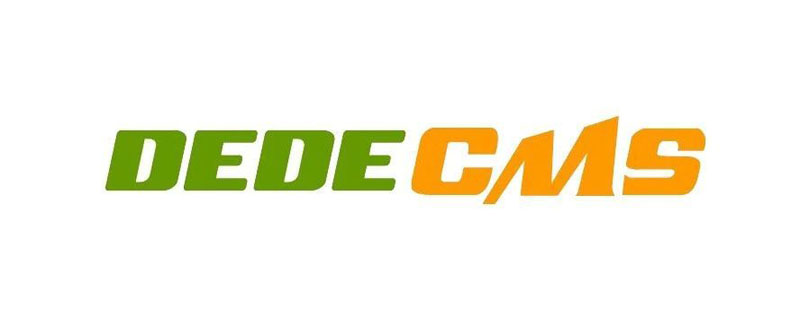I didn’t expect that dedecms can DIY like this, awesome
Address: http://www.dedecms.com/archives/templethelp/help/
Before understanding the template code of DedeCms, it is very meaningful to understand the knowledge of the Dreamweaver template engine . The Dreamweaver template engine is a template parser that uses XML namespaces. The biggest advantage of using the Dreamweaver parser to parse templates is that you can easily specify the attributes of the tag. It feels like using HTML, making the template code very intuitive. Flexible, the new version of the Dreamweaver template engine can not only parse the template but also analyze the wrong tags in the template.
1. The code styles of the DreamWeaver template engine have the following forms:
{dede: tag name attribute='value'/}
{dede: tag name attribute='value'}{/dede: tag name}
{ dede: tag name attribute = 'value'} Custom style template (InnerText) {/dede: tag name}
Tips:
If you use a tag with an underlying template, you must strictly use {dede: tag name attribute = 'value'} {/dede:mark name} This format, otherwise an error will be reported.
2. The Dreamweaver template engine has multiple built-in system tags, and these system tags can be used directly in any situation.
(1) global tag means to obtain an external variable. In addition to the database password, it can call any configuration parameters of the system. The form is:
{dede:global name='variable name'}{/dede:global}
or
{dede:global name='variable name'/}
The variable name cannot be added with the $ symbol, such as the variable $cfg_cmspath, which should be written as {dede:global name='cfg_cmspath'/}.
(2) foreach is used to output an array, in the form:
{dede:foreach array='array name'}[field:key/] [field:value/]{/dede:foreach}
(3) include introduction A file in the form:
{dede:include file='file name' ismake='whether it is a dede section template (yes/no)'/}
The search path for files is in the order: absolute path, include folder, CMS installation directory, CMS main template directory
3. The Dreamweaver mark allows the use of functions in any mark to process the obtained value, in the form:
{dede: mark name attribute='value' function='youfunction("Parameter One","Parameter two","@me")'/}
where @me is used to represent the value of the current tag, other parameters are determined by your function whether they exist, for example:
{dede:field name='pubdate 'function='strftime("%Y-%m-%d %H:%M:%S","@me")'/}
4. The Dreamweaver mark allows limited programming expansion.
The format is:
{dede:tagname runphp='yes'}
$aaa = @me;
@me = "123456";
{/dede:tagname}
@me represents the value of the tag itself, so within the tag You cannot use statements such as echo in programming. You can only pass all return values to @me.
In addition, since the program code occupies the content of the underlying template InnerText, the tags that require programming can only use the default InnerText.
The above introduces the official reference of dedecms dedecms template tag code, including the content of dedecms. I hope it will be helpful to friends who are interested in PHP tutorials.
 dedecms怎么增加多语言Feb 27, 2023 am 09:21 AM
dedecms怎么增加多语言Feb 27, 2023 am 09:21 AMdedecms增加多语言的方法:1、进入dedecms后台,创建封面栏目;2、将封面栏目“常规选项”的文件保存目录设置为cn或者en;3、将封面栏目“高级选项”的列表模板设置为“cn_index.htm”或者“en_index.htm”;4、单独调用每种语言的封面栏目和每种语言下的导航栏目即可。
 织梦cms是什么语言写的Feb 21, 2023 am 09:45 AM
织梦cms是什么语言写的Feb 21, 2023 am 09:45 AM织梦cms是用PHP语言写的。织梦CMS(DedeCMS)是一个PHP开源网站管理系统,作用是构建中小型网站;它采用PHP+MySQL技术开发,可同时使用于windows、linux、unix平台。
 dedecms是什么语言Feb 24, 2023 am 09:46 AM
dedecms是什么语言Feb 24, 2023 am 09:46 AMdedecms是PHP语言开发的;dedecms中文全称是织梦内容管理系统,是一个PHP开源网站管理系统;dedecms基于PHP和MySQL技术开发,可同时使用于Windows、Linux、Unix平台。
 dedecms怎么删除栏目Jul 13, 2023 pm 04:31 PM
dedecms怎么删除栏目Jul 13, 2023 pm 04:31 PMdedecms删除栏目的方法:1、登录后台管理;2、进入“栏目管理”,可以看到当前网站所有栏目;3、选择要删除的栏目;4、将鼠标悬停在栏目名称上,删除栏目;5、点击“确认”按钮以继续删除操作;6、删除成功。
 2023年织梦dedeCMS视频教程推荐Oct 25, 2019 pm 01:56 PM
2023年织梦dedeCMS视频教程推荐Oct 25, 2019 pm 01:56 PM织梦内容管理系统(DedeCMS) 以简单、实用、开源而闻名,是国内最知名的PHP开源网站管理系统,也是使用用户最多的PHP类CMS系统,在经历多年的发展,目前的版本无论在功能,还是在易用性方面,都有了长足的发展和进步。
 DedeCMS创始人林学(IT 柏拉图)逝世Dec 05, 2022 am 11:54 AM
DedeCMS创始人林学(IT 柏拉图)逝世Dec 05, 2022 am 11:54 AM12 月 3 日下午,DedeCMS 创始人林学(IT 柏拉图)因罹患癌症逝世。林学生于 1979 年 10 月 10 日,于 2004 年 8 月编写的 DedeCMS 至今仍有数十万企业、个人站长使用。
 dedecms有移动端吗Mar 02, 2023 am 09:30 AM
dedecms有移动端吗Mar 02, 2023 am 09:30 AMdedecms有移动端,其移动端安装方法是:1、将DATA移到根目录外的安全设置,修改“/m/index.php”代码;2、在“更新主页HTML”中,将“选择主页模板”改为“default/index_m.htm”;3、将首页“图文资讯”的url修改为移动端链接;4、设置移动站可通过二级域名访问即可。
 火车头dedecms出现乱码怎么办Jul 19, 2023 pm 02:19 PM
火车头dedecms出现乱码怎么办Jul 19, 2023 pm 02:19 PM火车头dedecms出现乱码解决方法:1、检查数据库编码;2、修改dedecms配置文件;3、检查浏览器编码设置;4、清理缓存和临时文件;5、寻求专业帮助。


Hot AI Tools

Undresser.AI Undress
AI-powered app for creating realistic nude photos

AI Clothes Remover
Online AI tool for removing clothes from photos.

Undress AI Tool
Undress images for free

Clothoff.io
AI clothes remover

AI Hentai Generator
Generate AI Hentai for free.

Hot Article

Hot Tools

Dreamweaver CS6
Visual web development tools

Zend Studio 13.0.1
Powerful PHP integrated development environment

Safe Exam Browser
Safe Exam Browser is a secure browser environment for taking online exams securely. This software turns any computer into a secure workstation. It controls access to any utility and prevents students from using unauthorized resources.

SublimeText3 Mac version
God-level code editing software (SublimeText3)

Atom editor mac version download
The most popular open source editor






